Ham Radio Calling Frequencies: Quick Start & Field Tips with Ham Radio Mobile Phone Stand
If you’ve just entered the world of amateur radio, you’ll quickly discover that knowing the right calling frequencies is one of the most valuable skills you can develop.
Whether you’re in your home shack, out on a SOTA activation, or responding to an emergency, having quick access to these frequencies can make all the difference.
In this guide, we’ll cover what calling frequencies are, why they matter, and practical tips for using them effectively - plus a quick reference chart you can use with Ham Radio Mobile Phone Stand in the field.
Quick Access in the Shack or Field
What Are Calling Frequencies?
A calling frequency is a designated spot within a band where operators listen and call CQ to establish contact.
Think of it as the “lobby” of the band—you meet there, make contact, and then move to another frequency for your actual QSO.
Calling frequencies are:
-
Monitored regularly by hams in your area
-
Standardized so you know where to start listening
-
Essential in emergencies when time is critical
Why They’re Important
When every second counts—like during a contest, activation, or emergency—you don’t want to waste time scanning blindly.
Calling frequencies let you:
-
Quickly find activity in your area
-
Make first contact faster
-
Coordinate operations before moving to a working frequency
-
Maintain situational awareness by leaving one radio monitoring the calling frequency
Popular Ham Radio Calling Frequencies
Here are some of the most commonly used national calling frequencies in the U.S.:
|
Frequency |
Band |
Use |
|---|---|---|
|
146.520 MHz |
2m (VHF) |
National Simplex Calling Frequency |
|
446.000 MHz |
70cm (UHF) |
National Simplex Calling Frequency |
|
223.500 MHz |
1.25m |
National Simplex |
|
29.600 MHz |
10m (HF) |
FM Simplex |
|
52.525 MHz |
6m (VHF) |
FM Simplex |
Tip: Always check your local band plan—some regions have slightly different calling allocations.
Emergency & Monitoring Frequencies
While not all are amateur allocations, many hams also keep these in their radios for situational awareness:
|
Frequency |
Service |
Notes |
|---|---|---|
|
162.400–162.550 MHz |
NOAA Weather Radio |
Continuous weather & hazard info |
|
27.065 MHz (CB Ch 9) |
CB Radio |
Emergency calling |
|
462.675 MHz (GMRS Ch 20) |
GMRS |
Emergency coordination |
Field Tips for Using Calling Frequencies
-
Always Announce Your Call Sign Clearly
Keep your initial CQ short and to the point.
-
Move to a Working Frequency After Contact
This keeps the calling channel clear for others.
-
Use the Right Mode & Power
Follow your local band plan for mode (FM, SSB, etc.) and avoid overpowering.
-
Keep a Printed or Mounted Quick Reference Chart
Gear like a Ham Radio Mobile Phone Stand can save you from scrolling menus mid-QSO.
-
Monitor When Idle
Even if you’re not actively calling, monitoring can alert you to activity or emergencies.
Quick Access in the Shack or Field with Ham Radio Mobile Phone Stand
Many operators keep their go-bag or desk equipped with a visual frequency chart.
This ensures you:
-
Waste less time searching
-
Reduce the chance of mistakes
-
Stay focused on operating instead of looking up info
Tip: Our Ham Radio Mobile Phone Stand with HF/VHF/UHF Calling Frequency Chart is designed for exactly this purpose.
Also calling frequency chart is available as phone case see Ham Radio Phone Case - Calling Frequencies - Phone Cover
Final Thoughts
Learning and using calling frequencies is one of the simplest yet most effective ways to improve your amateur radio experience.
With a little preparation - and the right quick-reference tools - you can connect faster, respond in emergencies, and make every second on the air count.
For a full ARRL band plan and region-specific details, visit: ARRL Band Plans











Leave a comment